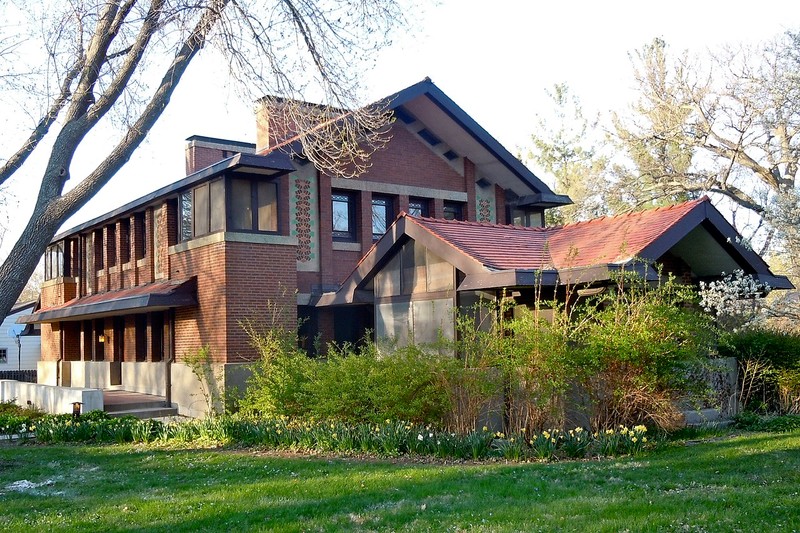B.J. Ricker House
Introduction
Text-to-speech Audio
Completed in 1912, the B.J. Ricker House is one of the finest examples of Prairie School architecture in Iowa. Leading early 20th-century American architect Walter Burley Griffin (1876-1937) designed it for local businessman Benjamin J. Ricker. It features a high basement, four large brick corner piers, a gable roof that extends over each side, a covered veranda, an attached garage, and stucco panels with decorative brick and tile patterns. Inside, the house features five bedrooms, three-and-a-half bathrooms, oak woodwork, cove lighting, recessed bookcases, sleeping porches, and fireplaces with tile decoration. Griffin's wife, Marion, who was one of the first licensed woman architects in the world, designed the tiles. The house is a private residence is not open for tours. It was added to the National Register of Historic Places in 1979.
Images
The B.J. Ricker House is one of the best examples of Prairie School architecture in Iowa. Built in 1912, it was designed by noted American architect Walter Burley Griffin, who designed the city of Canberra, the capital Australia.

Backstory and Context
Text-to-speech Audio
Walter Burley Griffin was born November 24, 1876 in a suburb of Chicago. Initially interested in landscape design, he studied architecture at the University of Illinois at Urbana-Champaign and graduated in 1899. After working independently for a couple of years he was hired by architect Frank Lloyd Wright in Oak Park (another Chicago suburb) in 1901 and remained until 1905. During that time he met Marion (they would later marry in 1911). He opened an office in Chicago and began working on mostly residence commissions, some of which were in the Chicago area.
In 1911, Benjamin Ricker was on the committee that commissioned Griffin to design a memorial fountain in Central Park, New York City, in honor of former Grinnell major Dr. Elbert Clark. Ricker, who was a partner in a local manufacturing company, hired Griffin to design the house at that time. In contrast to Wright's emphasis on horizontal lines, Griffin designed the Ricker house to emphasize solid massing. This aspect is what distinguishes Griffin's work.
In 1912, the Australian government hired Griffin to design the Canberra, the capital city of Australia. Marion, who was also an artist, made watercolor renderings of the design that played a major role in the selection of Griffin as the city's architect on May 28, 1912. He was soon named Federal Capital Director. Unfortunately, disagreements with government officials, lack of funding, and other issues slowed the city's development and undermined Griffin leadership on the project. As a result he resigned in 1921. However, he remained in Australia until 1935 when his design for a library in India was accepted. The commission revived his career but he died of illness in February 1937. Marion, who had moved to India to be with him, returned to Chicago where she died in 1961.
Sources
"Architectural Treasures Walking Tour." Grinnell Chamber of Commerce. Accessed February 17, 2022. https://www.grinnellchamber.org/en/things_to_do/history__architecture/architectural_treasures_walking_tour.
"Biographies." Walter Burley Griffin Society of America. Accessed February 17, 2022.
Klingensmith, S. J. "B.J. Ricker House." National Park Service - National Register of Historic Places Nomination Form. December 25, 1979. https://npgallery.nps.gov/NRHP/GetAsset/NRHP/79000937_text
Wikimedia Commons: https://commons.wikimedia.org/wiki/File:Ricker_House_2_Grinnell_IA.jpg
